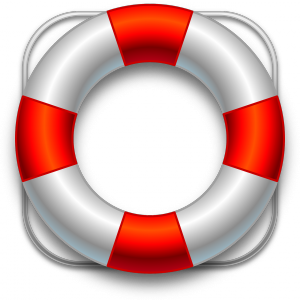SOS: Keeping Kitty Safe in Emergencies

 As unpleasant as the prospect may seem, planning for emergencies may mean the difference between life and death for the feline member(s) of your human family.
As unpleasant as the prospect may seem, planning for emergencies may mean the difference between life and death for the feline member(s) of your human family.
And while the ASPCA has designated September National Preparedness Month, all conscientious cat guardians should ALWAYS be prepared. Simply put: if a situation is dire for you, it’s equally dire for your cat.
If you live in an area prone to such natural disasters as tornadoes, earthquakes or floods, plan accordingly. Determine in advance which rooms are “safe” rooms — easily cleaned areas like utility rooms, bathrooms and basements. Because access to fresh water is critical, fill bathtubs and sinks ahead of time in case of power outages or other crises. In the event of flooding, take shelter in the highest part of your home, preferably in a room with high counters or shelves for your cat to perch on.
When first alerted to the approach of severe weather — and the possibility of eventual evacuation — ensure that your car’s tank is full, all essential fluids are topped off, and a high power flashlight (with fresh batteries) is in the glove compartment. If you must evacuate, prepare for the worst-case scenario: think weeks, not days.
And being prepared includes a feline emergency evacuation kit equipped with a first aid kit; two weeks worth of canned (pop-top) cat food; bottles of water; food and water bowls; disposable litter box or a small plastic litter box; scoop-able litter and scoop or paper toweling; small plastic bags; brush and comb; hand sanitizer, liquid dish soap and disinfectant; treats, toys, towels and blankets.
Of critical importance are photocopies and/or USB of medical records and a waterproof container with a two-week supply of any medicine your cat requires (medications must be rotated out of the kit if close to their expiry dates); recent photos of your cat (should you be separated and have to print “Lost” posters); and an extra collar with updated ID tags, although microchipping your cat is the best precaution of all.
And, of course, a traveling bag, crate or carrier (if more than one cat — ideally one for each) with complete contact information attached.
 While ensuring your cat’s safety, ensure your safety and that of your family’s as well by putting your own emergency plan in place. Tailor your emergency “kit” to meet your own specific needs, but ensure that your car is equipped with: a first aid kit; several gallons of water; non perishable foods, protein bars, etc.; a cell phone with chargers; a battery operated radio; flashlights and batteries; a multi-purpose tool, duct tape, scissors and whistle; sanitation and personal hygiene items; hand sanitizers and baby wipes; protective clothing, footwear and emergency blankets; maps(s) of the area; extra money and medications; copies of personal documents (medication list and pertinent medical information, proof of address, deed/lease to home, passports, birth certificates, insurance policies); extra house and car keys, and family and emergency contact information.
While ensuring your cat’s safety, ensure your safety and that of your family’s as well by putting your own emergency plan in place. Tailor your emergency “kit” to meet your own specific needs, but ensure that your car is equipped with: a first aid kit; several gallons of water; non perishable foods, protein bars, etc.; a cell phone with chargers; a battery operated radio; flashlights and batteries; a multi-purpose tool, duct tape, scissors and whistle; sanitation and personal hygiene items; hand sanitizers and baby wipes; protective clothing, footwear and emergency blankets; maps(s) of the area; extra money and medications; copies of personal documents (medication list and pertinent medical information, proof of address, deed/lease to home, passports, birth certificates, insurance policies); extra house and car keys, and family and emergency contact information.
Forewarned, as they say, is forearmed. And planning ahead helps cat guardians keep cool heads while keeping their cherished cats safe at the same time.
